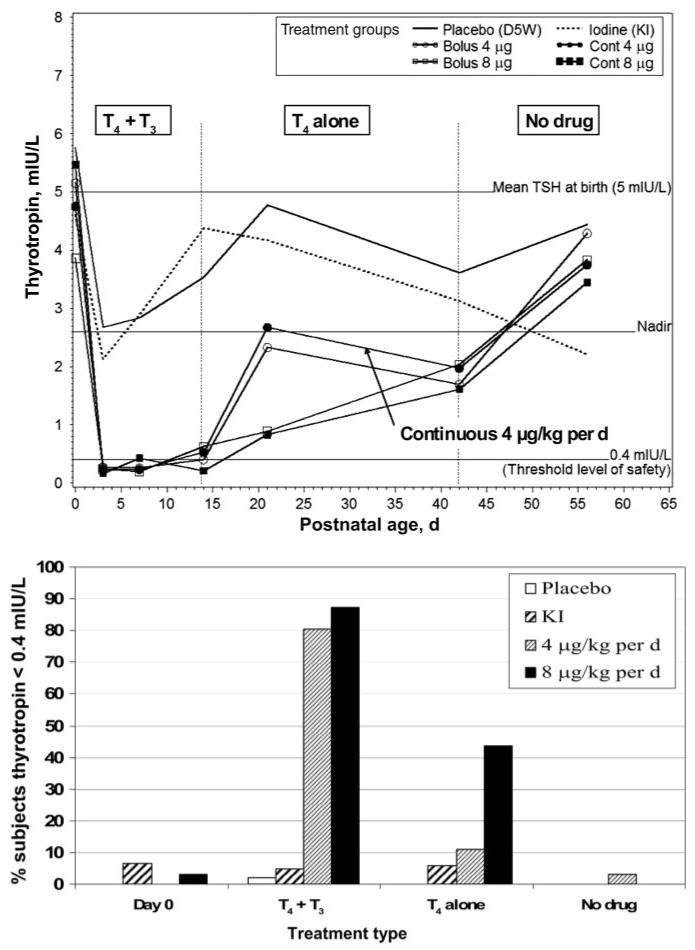FIGURE 3.

Upper, Thyrotropin results across the 6 study arms. After day 1, all thyrotropin levels fell in the hormone treatment arms to lower values than either placebo or iodine arms (P < .0001). Thyrotropin levels of both of the 4 μg/kg per day arms were intermediate between both 8 μg/kg per day and placebo arms during days 15 to 42 (P < .008 in either comparison). Similarly, on days 15 to 42, thyrotropin levels in the 8 μg/kg per day arms were both significantly lower than in the placebo and iodine arms (P < .001 in either comparison). Note: vertical lines demarcate treatment epochs as indicated. Data from 20 to 27 values per point are illustrated. Lower, Percent of subjects with a thyrotropin level of <0.4 mIU/L. Study arms are combined to illustrate the percentage of enrolled subjects with extremely low levels of thyrotropin (<0.4 mIU/L). During combined drug treatments (from birth to 14 days), >80% of hormone-treated subjects were affected (P < .001 versus placebo or iodine). Subsequently, when supplemented with only T4 (day 15–42), abnormally low thyrotropin levels were still observed in >40% of the combined 8 μg/kg per day arms but in just 11% of the combined 4 μg/kg per day arms (P < .002 vs 8 μg/kg per day). See “Results” and “Discussion” for additional commentary. D5W indicates 5% dextrose in water.
